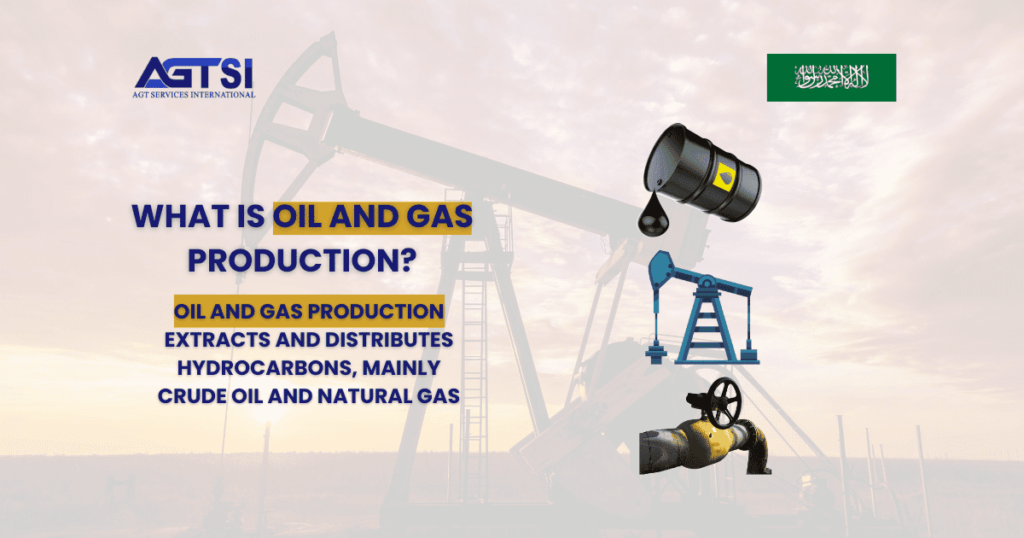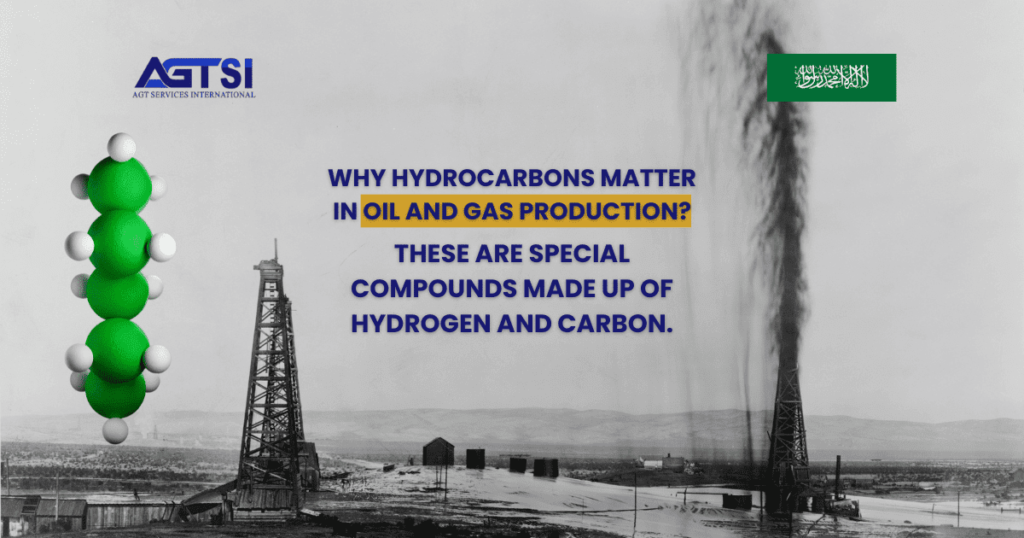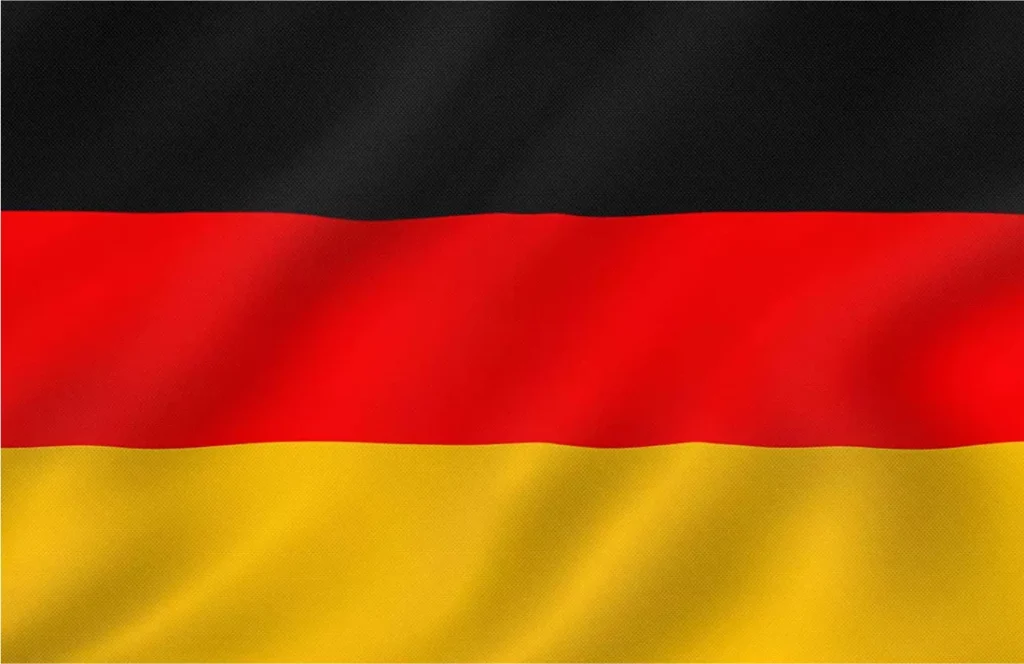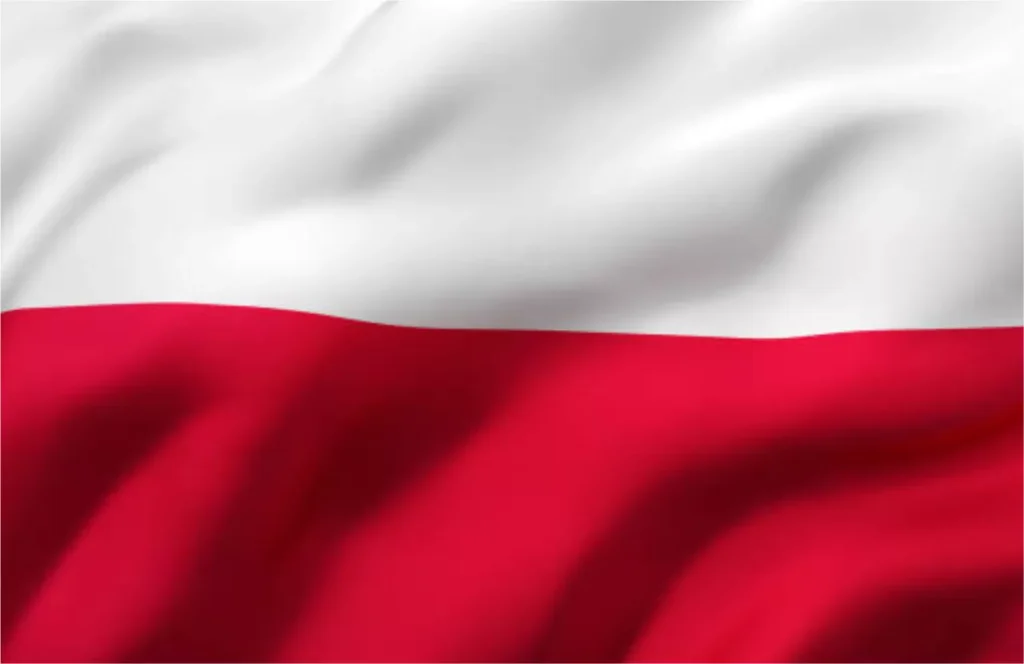Introduction:
Explore how the oil and gas industry works in this $5 trillion global sector. From hydrocarbons to extraction methods, discover upstream, Midstream, and downstream processes. Uncover terms like barrels and BOE, learn about superstar oil producers, and understand the Three “P”s of oil reserves. Gain a complete insight into the workings of the intricate oil and gas industry.
How Oil and Gas Industry Works? Answer is Simple
The oil and gas industry extracts and processes hydrocarbons, like crude oil and natural gas. Exploration and Production (E&P) find and drill wells, Midstream transports raw materials, and Downstream refines them.
Integrated companies handle both. Hydrocarbons are essential, and extraction methods include practices like fracking. Top-producing countries with reserves and advanced technology play a crucial role. The Three “P”s of oil reserves guide future planning. In summary, the industry extracts, refines, and distributes hydrocarbons to meet global energy needs.
What Is Oil and Gas Production?
Oil and gas production involves extracting, processing, and distributing hydrocarbons, primarily crude oil and natural gas. This process encompasses locating and drilling wells by Exploration and Production (E&P) companies, transporting raw materials through methods like pipelines by Midstream companies, and converting raw oil and gas into usable products for distribution through refineries in the Downstream sector.

What are hydrocarbons? The Fundamental Building Blocks of Crude Oil and Natural Gas
Before we jump into the complicated details of making oil and gas, let’s explore the cool world of hydrocarbons. Hydrocarbons are special compounds with hydrogen and carbon, like the building blocks of crude oil and natural gas—stuff we need for energy.
Picture this: over millions of years, organic remains, including plants and animals, undergo compression in sedimentary rocks like sandstone and shale. These rocks, crafted by deposits in ancient oceans and water bodies, seamlessly incorporate decaying organic material. As layers of sediment accumulate on the ocean floor, the remnants of plants and animals become integral components of the rock formation.
Here’s where it gets intriguing. Deep within the Earth’s crust, specific temperature and pressure conditions work their magic, transforming this amalgamation of organic material into what we know as hydrocarbons—crude oil and natural gas. Their lower density than water prompts hydrocarbons to embark on a journey, migrating through porous sedimentary rock towards the Earth’s surface.
Enter the captivating geological dance. When these hydrocarbons encounter less-porous cap rock, they get trapped, giving rise to an oil and gas reservoir. The next act involves drilling through this cap rock, allowing for the extraction of hydrocarbons—a pivotal contribution to the intricate web of the global oil and gas supply.
Why Hydrocarbons Matter in Oil and Gas Production?
Now, before we jump into how we get oil and gas, let’s talk about hydrocarbons. These are special compounds made up of hydrogen and carbon. Think of them as the building blocks of oil and gas. Picture this: plants and animals squished over millions of years, making these hydrocarbons.

Why is this important? Well, understanding hydrocarbons is like having a map for the journey of oil and gas. These compounds, made by the Earth’s processes, are the starting point for getting the oil and gas we use every day. So, now that we’ve got the basics of hydrocarbons let’s check out how we turn them into the energy that powers our homes and industries. Easy, right?
Hydrocarbons Extraction: Fracking Techniques
Sometimes, in places where there’s a special kind of rock called oil shale, the oil and gas industry uses something called hydraulic fracturing, or “fracking.” This way of getting energy has some good parts, but it also has some problems that people talk about. Let’s look at why.
Things to Think About for Nature:
Fracking works by pushing a mix of water, sand, and chemicals into rocks underground. This makes cracks in the rocks, so the energy stuff (hydrocarbons) can come out more easily. But, doing this can cause some issues for nature:
Water Worries: The chemicals used in fracking might mix with the water underground, which can be a problem for the water we drink.
Shaky Ground: Fracking has been connected to more shaking in the ground (like earthquakes) in some places, but scientists are still figuring out how much is because of fracking.
Messy Water and Dirt: Getting rid of the water used in fracking can make the water and dirt on the surface not so clean.
Money Matters Too:
Now, let’s talk about money! Fracking has changed how we get energy around the world. It’s made some good things happen, but it also has some challenges:
Being on Our Own: Fracking has helped some countries not need to buy energy from other places as much, which is good for them.
Jobs, Jobs, Jobs: More fracking means more work in areas where there’s a lot of that special rock. This helps the local economy and gives people jobs.
Up and Down Prices: Because there’s more oil and gas from fracking, the prices for these things can change a lot. This up-and-down can make things tricky for buyers and sellers.
Rules to Play By:
Governments and groups that make rules are working hard to make sure fracking is done in a way that’s safe for nature. They’re making new rules to:
Take Care of Nature: Make sure the water and dirt stay clean and safe.
Watch Out for Shaking: Keeping an eye on how much the ground is shaking because of fracking.
Follow the Right Ways: Make sure everyone does fracking in a way that’s okay for the environment.
Getting to Know the Three Parts: Upstream, Midstream, and Downstream in Oil and Gas Industry
Before we explore the three segments — upstream, Midstream, and downstream — let’s take a quick look at why these parts exist and how they team up. Imagine these segments as players in a team sport, each with a specific role, working together to make the oil and gas industry function smoothly.

What is Upstream: Exploration and Production (E&P)
Upstream operations, or Exploration and Production (E&P), focus on discovering and extracting crude oil and natural gas from underground reservoirs.
Exploration and Production (E&P), commonly referred to as upstream operations in the oil and gas industry, involve the initial phases of finding and extracting crude oil and natural gas. This crucial sector encompasses activities such as locating underground reservoirs, drilling wells, and bringing these valuable resources to the surface.
At the forefront of the industry are upstream companies, also known as E&P companies, tasked with finding reservoirs and drilling oil and gas wells. This segment involves high risks, substantial capital investment, and is technologically intensive. E&P companies do not typically own their drilling equipment; instead, they contract drilling companies for these services.
What is Midstream in an Oil and gas company? Transportation
Midstream in the oil and gas industry, termed as transportation, pertains to the vital process of moving raw materials from well sites to refineries, facilitating the subsequent stages of refining and distribution.
Midstream in the oil and gas industry, specifically transportation, involves the movement of extracted raw materials, such as crude oil and natural gas, from well sites to refineries through various means like pipelines. It serves as a crucial link connecting upstream extraction to downstream processing and distribution.
Midstream companies focus on the transportation of raw materials from wells to refineries. This segment involves shipping, trucking, pipelines, and storing these materials. It is characterized by high regulation, particularly in pipeline transmission, and is inherently dependent on the success of upstream firms.
What is the Downstream Process In Oil and Gas? Refining and Sale
Refining and Sale is the last step in the process, where crude oil and natural gas are transformed into consumer-ready products, including gasoline and heating oil, through refining in facilities like refineries before being distributed to consumers at gas stations.
Refining and Sale is the stage where hydrocarbons, such as crude oil and natural gas, undergo their final transformation before reaching consumers. Refineries play a crucial role in converting raw oil and gas into usable products like gasoline, jet fuel, and heating oil. Once refined, these products are distributed to consumers through gas stations, making them readily available for public use. In simple terms, downstream operations give the finishing touches to hydrocarbons, making them suitable for everyday consumption.
Understanding Oil Production Metrics
In the world of oil, understanding the metrics is like going on a thrilling adventure. Let’s embark on this journey together!
Barrels (bbl): Imagine a strong barrel you might see on a farm. Now, think of it filled with liquid gold—oil. A single barrel equals 42 U.S. gallons, showing us just how much energy is packed in one container.
The Magic of “M”: In the world of numbers, “M” is like a magic trick. When we say “Mbbl,” think of a sturdy thousand barrels. And if it’s “MMbbl,” imagine a million barrels—a quick way to understand the massive scale of oil production.
Gas in Cubic Feet (Mmcf): Shifting to gas, we measure it in cubic feet. “Mmcf” means one million cubic feet, like a huge space filled with air. It’s a reminder of the enormous amounts that flow through the industry’s pipelines.
BOE: The Conversion Dance: To speak the same language in the diverse world of oil and gas reporting, companies do a clever dance—turning gas production into barrels of oil equivalent (BOE). This special move brings everything together, making the complex world of energy easy to understand.
Integrated Oil Companies: Upstream and Downstream Integration
Now, let’s talk about companies that do everything in the oil world—finding it and turning it into stuff we can use. We call them “integrated oil companies.” It’s like having one superhero that can do all the jobs.
The cool thing about these companies is that they control everything from start to finish. It’s like if you grew your vegetables and then cooked them into a tasty meal. Integrated companies do that with oil—they find it (upstream) and then make it into things like gas and oil for your car (downstream).
The only challenge? It costs a lot to be this superhero. But because they can do it all, they’re super efficient, making them strong players in the oil world.
Top Oil and Gas Producing Countries:
A select group of countries dominates the global landscape of oil and gas production, each contributing significantly to the world’s energy supply. As of the latest data, the United States leads the pack as the largest net producer of crude oil, followed closely by Saudi Arabia and Russia. Canada, China, and other nations also play crucial roles in shaping the dynamics of this industry. The table below presents a snapshot of the top oil-producing countries, showcasing their respective crude oil production levels in million barrels per day (MMbbl/d). This information is essential for understanding the geopolitical and economic forces that influence the energy sector on a global scale.
North America Oil and Gas Producing Countries:
| # | Country | Crude Oil Production (MMbbl/d) |
| 1 | United States of America | 17,924.2 |
| 2 | Canada | 5,468.1 |
| 3 | Mexico | 1,905.5 |
Middle East Oil and Gas Producing Countries:
| # | Country | Crude Oil Production (MMbbl/d) |
| 1 | Saudi Arabia | 10,815.7 |
| 2 | Iraq | 4,161.5 |
| 3 | United Arab Emirates | 3,769.1 |
| 4 | Iran | 3,450.3 |
| 5 | Kuwait | 2,720.5 |
| 6 | Qatar | 1,815.1 |
| 7 | Oman | 978.8 |
| 8 | Bahrain | 185.3 |
Europe Oil and Gas Producing Countries:
| # | Country | Crude Oil Production (MMbbl/d) |
| 1 | Russia | 10,749.5 |
| 2 | Norway | 2,026 |
| 3 | United Kingdom | 890.4 |
| 4 | Germany | 135 |
South America Oil and Gas Producing Countries:
| # | Country | Crude Oil Production (MMbbl/d) |
| 1 | Brazil | 3,629.1 |
| 2 | Argentina | 690.2 |
| 3 | Venezuela | 604.8 |
| 4 | Ecuador | 478 |
Africa Oil and Gas Producing Countries:
| # | Country | Crude Oil Production (MMbbl/d) |
| 1 | Nigeria | 1,646.9 |
| 2 | Algeria | 1,414.8 |
| 3 | Libya | 1,252.8 |
| 4 | Angola | 1,197.6 |
| 5 | Ghana | 185.7 |
| 6 | Republic of the Congo | 270.9 |
| 7 | South Sudan | 157.1 |
| 8 | Equatorial Guinea | 142.6 |
| 9 | Gabon | 175 |
Asia Oil and Gas Producing Countries:
| # | Country | Crude Oil Production (MMbbl/d) |
| 1 | People’s Republic of China | 4,712.2 |
| 2 | Kazakhstan | 1,864.9 |
| 3 | India | 771.4 |
| 4 | Indonesia | 842.3 |
| 5 | Azerbaijan | 711.7 |
| 6 | Malaysia | 593.8 |
| 7 | Thailand | 438.2 |
| 8 | Turkmenistan | 249.7 |
| 9 | Vietnam | 197.7 |
Oceania Oil and Gas Producing Countries:
| # | Country | Crude Oil Production (MMbbl/d) |
| 1 | Australia | 441.5 |
Why These Countries E?xcel in Oil and Gas Production?
Think of it like a competition, but instead of sports, it’s about making oil and gas. These countries are super good because:
They Have a Lot of Stuff (Reserves): Imagine having a huge stash of toys to play with. These countries have massive amounts of the stuff needed to make oil and gas.
They Use Cool Tools (Technology): Just like having the latest gadgets makes tasks easier, these countries use advanced tools and methods to get more oil and gas.
They Understand the World (Geopolitical Reasons): It’s like knowing the best places to set up your lemonade stand. These countries understand where to find and sell oil and gas to make the most of it.
Three “P”s of Oil Reserves: Proven, Probable, Possible
Oil reserves are like treasures hidden beneath the Earth’s surface. Imagine you’re on a quest to find hidden gems, and these gems are classified into three categories: Proven, Probable, and Possible—let’s call them the Three “P”s.
Proven (P90): These are the gems we’re pretty certain about, with a whopping 90% certainty. It’s like having a treasure map that’s almost guaranteed to lead you to valuable treasures.
Probable (P50): These are the gems where we’re 50% sure they exist. Think of it like having a map that might guide you to treasures—it’s a bit uncertain, but there’s a good chance you’ll find something valuable.
Possible (P10): These gems are more like hidden mysteries. There’s a 10% certainty that they’re there. It’s akin to having a map where you’re not entirely sure if it will lead you to treasures, but there’s a slight chance.
Connecting to the Future: Securing Tomorrow’s Treasures
Now, why do these “Ps” matter for the future of the oil and gas industry? Well, just like in our treasure quest, these categories help companies plan for the future.
Proven reserves are like the guaranteed gems that companies can rely on for steady production. They’re a crucial part of ensuring a stable supply of oil and gas.
Probable reserves add a bit of excitement. Companies explore these areas, expecting to find more treasures. If successful, it means more resources for the future.
Possible reserves are the wild cards. Companies keep an eye on these, hoping that new technologies or discoveries might turn them into valuable assets in the future.
Final Thoughts:
In conclusion, the oil and gas industry operates through a complex yet fascinating process involving upstream exploration, midstream transportation, and downstream refining and sales. Integrated companies, significant producers, and reserves exploration contribute to the industry’s dynamic nature. Understanding the fundamentals is vital for investors and enthusiasts looking to navigate this vast and influential sector.

















